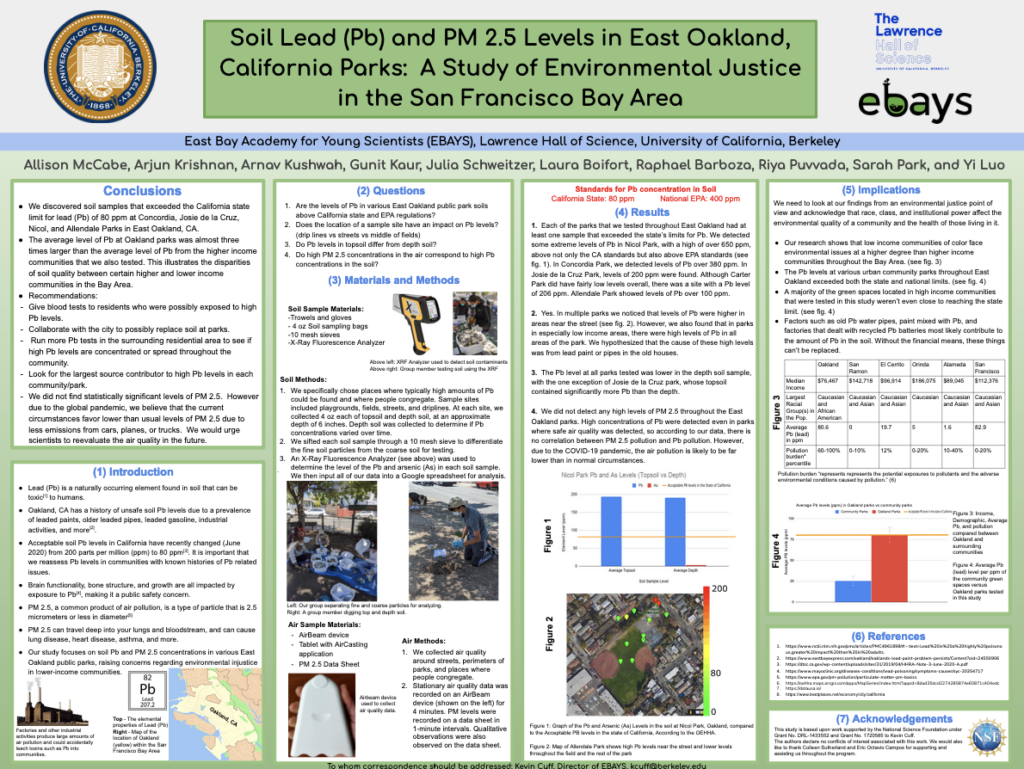High Lead (Pb) Levels in East Oakland, California Parks
An Indicator of Environmental Injustice in the San Francisco Bay Area
Research by: Allison McCabe, Arjun Krishnan, Arnav Kushwah, Gunit Kaur, Julia Schweitzer, Laura Boifort, Raphael Barboza, Riya Puvvada, Sarah Park, and Yi Luo

Accepted Abstract
Our team at the East Bay Academy for Young Scientists (EBAYS) investigated the current state of soil pollution in California’s San Francisco Bay Area, which we are using to address environmental injustice in low-income communities. Our main area of focus was Oakland, a city susceptible to contaminated soil due to the prevalence of lead (Pb) in the form of leaded paints, older lead pipes, and leaded gasoline.
Even relatively low levels of Pb can cause lead poisoning, particularly in children, causing symptoms such as chronic fatigue, learning disabilities, and birth defects. In June 2020, California Pb limits in soil were reduced from 200 parts per million (ppm) to 80 ppm, making it even more important that we reassess soils in Oakland. Additionally, arsenic (As) levels between 0.5-5.0 ppm can be fatal. To check that the Pb and As levels in this soil weren’t a concern to public health, we collected and analyzed samples of soil at six different public parks in Oakland.
At each park, we collected soil samples at between 10-30 individual locations. Soil samples of 4 ounces were collected at the surface and at depth (approximately 10 cm). After collecting these samples, we sifted each sample through a standard 10-mesh sieve and analyzed the resulting fine soil particles using an X-Ray Fluorescence Analyzer for Pb and As concentrations in ppm.
Our resulting data shows dangerously high levels of Pb in the soil of many East Oakland parks with up to 654 ppm of Pb and 78 ppm of As, much higher than the standard for the state of California. We also collected soil samples from a variety of other Bay Area communities. When we compared those to samples collected in East Oakland, we discovered that areas with higher income levels have lower Pb levels in soils. This study emphasizes the negative impacts of environmental injustices that lower-income communities face, and demonstrates the need for increased environmental protection measures in East Oakland.

